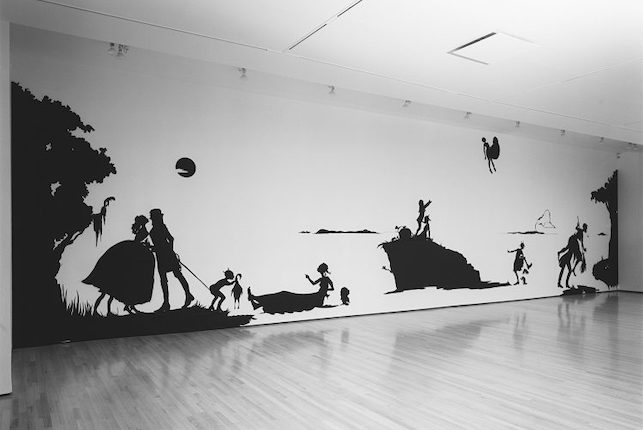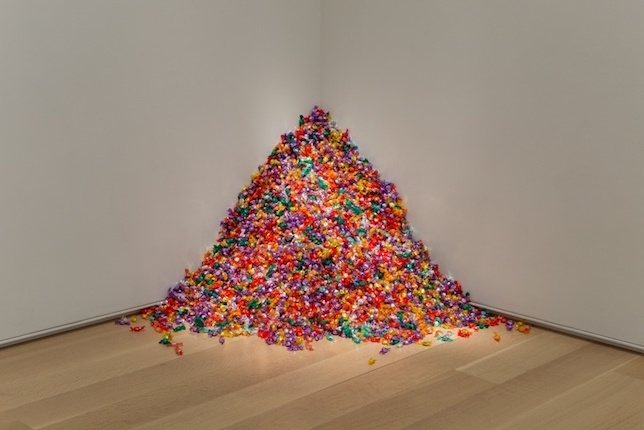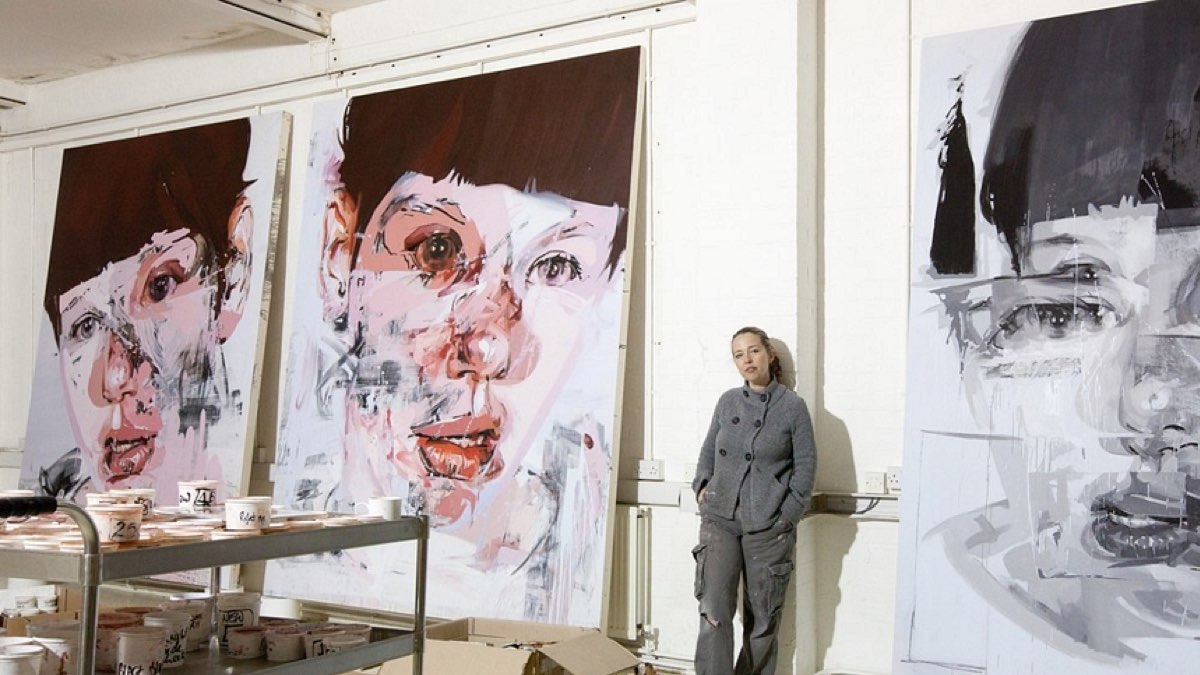
5 Artists of the 90s to Know
The 1990s was a decade of political and cultural change. Fears of terrorism replaced those of the Cold War, capitalist democracy grew steadily in the U.S. and the beginning of the digital age transformed the way we live and consume. Artists grappled with this changing climate by producing works that reflected the modern world and their place within it. Emphasizing tangible human experience, many works of this period approached issues of identity, gender, and the role of art itself. Join Artsper as we discuss five influential figures of 90s art through the mediums of paint, installation, photography and sculpture.
1. Jenny Saville

British artist Jenny Saville was a member of the YBAs (Young British Artists) in the 1990s. Led by Damien Hirst, the group is synonymous with the British art scene of this period. Their exhibitions were bold, provocative and artist-led, quickly attracting international attention.
Saville is most known for her large-scale depictions of nude women. Her work challenges the academic tradition of the nude, where women are typically depicted as objects to the male gaze. In Propped, one of her monumental works, Saville interrogates cultural perceptions of beauty and society’s aversion to fatness. By recalling the influence of master artists like Rembrandt and Freud, Saville positions herself within the history of the female nude, disrupting and subverting the tradition.
2. Tracey Emin

When thinking about 90s art, Tracey Emin is one of the first artists to spring to mind. Also a member of the YBAs, her work often explores her identity and place in society as a woman. It deals with intense emotion and personal experience, addressing themes such as love, loss, grief and desire.
Everyone I Have Ever Slept With 1963–1995 is one of Emin’s most celebrated works. It is a tent displaying the names of every person the artist has slept in a bed with. The work includes her brother, her mother, her two aborted fetuses, and various romantic partners. Viewers were invited to enter inside the tent to experience it as a whole. The work is full of contrasts, beginning with the material itself which consists of handmade patches sewn onto a mass-manufactured object. The tent is at once a place of refuge – a private and serene space – and a public display of the artist’s most intimate moments. It is the story of Emin’s life, told through the history of her body and relationships, whether lifelong or fleeting.
3. Wolfgang Tillmans

One of the most influential contemporary artists, Wolfgang Tillmans gained recognition in the 1990s when he photographed the German club scene. His work from this period is innovative in the treatment of its subjects and its crossover of genres and techniques, being both playful and socially critical.
Tillmans has experimented with abstract photography techniques since the beginning of his career. He has pursued this practice in the last two decades, producing non-representational photographs that emphasize the materiality of the photographic print while challenging and subverting the hierarchy between photography and fine art.
Tillmans’ exhibition style also breaks away from norms of the art world. Instead of framing his works, he often fixes them directly to the exhibition walls with pins and tape. He also places large scale canvases next to postcard-size images and photocopies. From his subjects to production techniques to exhibition style, Tillmans explores his surroundings and the medium of photography through one another, highlighting the extraordinariness of everyday life.
4. Kara Walker

American artist Kara Walker is one of the most influential figures of the 90s art scene. Her works often use paper cut-out silhouettes to comment on societal structures of power, race and gender.
One of Walker’s monumental works is Gone, an Historical Romance of a Civil War as It Occurred Between the Dusky Thighs of One Negress and Her Heart. It is a 50-foot mural of life-size figures depicting unsettling scenarios of violence and sex in the American South. In this piece, Walker employs the popular 18th century paper cut-out technique to address the history and ongoing effects of slavery in America, producing a subverted version of the traditional history painting. This work shocked contemporary audiences, and Walker’s use of racist caricatures was criticized by various African American artists. When talking about her use of the silhouette, an art form often used for racist caricatures, Walker stated that “the silhouette says a lot with very little information, but that’s also what the stereotype does.”
5. Felix Gonzalez-Torres

Felix Gonzalez-Torres was a Cuban-born American artist. He was involved in social and political activism in the 1990s as an openly gay man. Gonzalez-Torres often used everyday objects like lightbulbs, stacks of paper and packaged candies to create his works. Untitled (Portrait of Ross in L.A.) is a pile of candies weighing a total of 175 pounds, the average weight of an adult man. Visitors are invited to take pieces of candy away from the work, gradually decreasing its size and weight. The work is an homage to Gonzalez-Torres’ partner Ross Laycock who died from AIDS complications the year he made the work. The diminishing of the work over time can be compared to the physical deterioration that takes place before death from illness, the viewers of the work becoming complicit in this process. Gonzalez-Torres also passed away five years later due to AIDS-related complications.
An era of globalization…
90s art cannot be encapsulated in a group of artists or movements. The diversity in art during this period instead reflects a rapidly changing world marked by globalization. These five artists are only an introduction to the myriad of creators that defined the art of the 90s. Who is your favorite?

About Artsper
Founded in 2013, Artsper is an online marketplace for contemporary art. Partnering with 1,800 professional art galleries around the world, it makes discovering and acquiring art accessible to all.
Learn more













